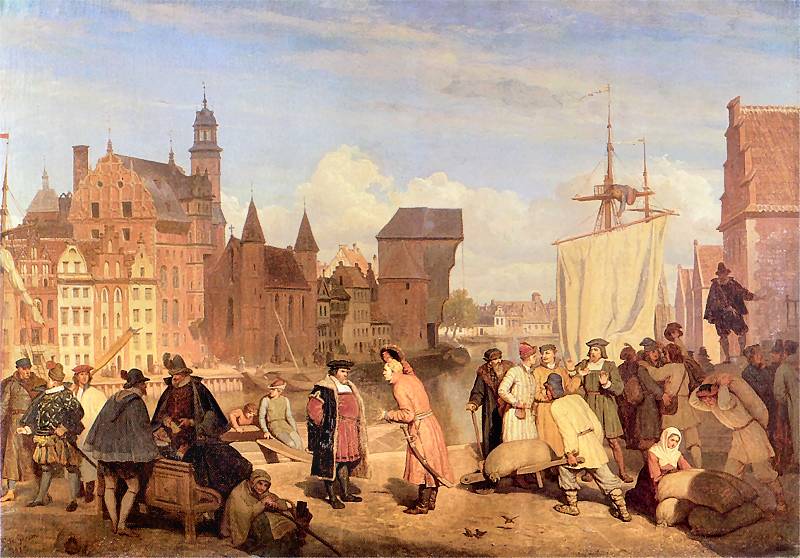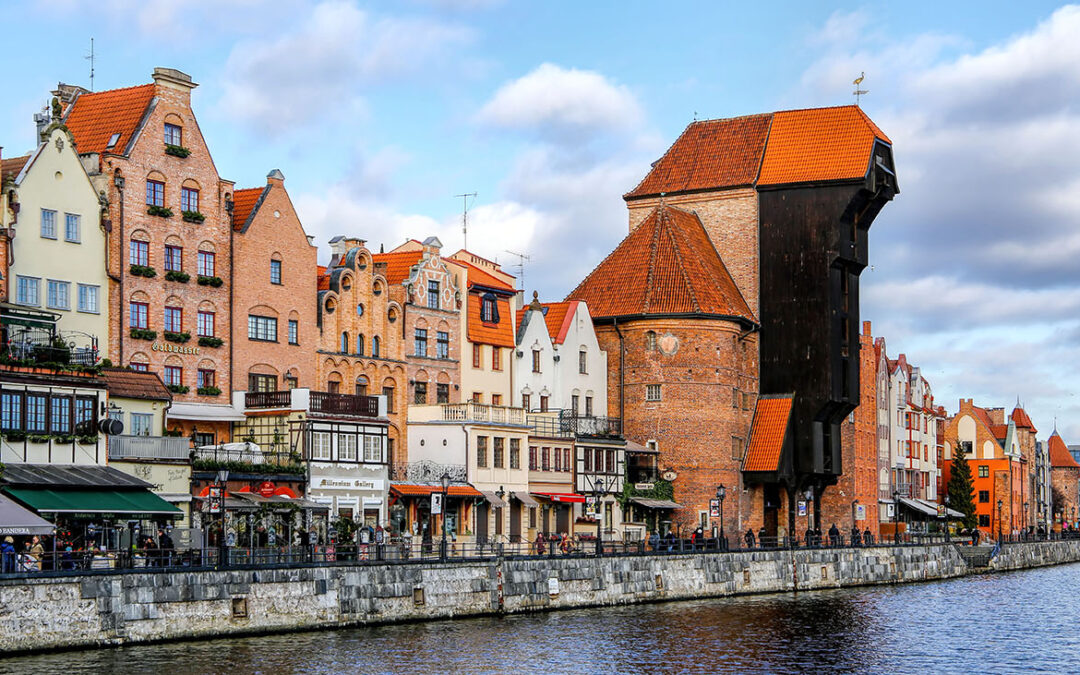A stone bearing the date 1651, showing the level that water reached during a flood that year, has been discovered during renovation of the Gdańsk Crane, the largest medieval harbour crane in Europe and a landmark of the Baltic coast city.
According to the National Maritime Museum in Gdańsk, it is the oldest stone of its kind to be found in the city and may be the only one from that time in Poland as a whole. The item will go on display in a new exhibition that will open inside the crane building once the renovation is complete.
The building, which as well as being a crane was also a watergate, was erected in the 1440s. It functioned through a period when Gdańsk was a thriving port city.

Gdańsk in the 17th century (1865) by Wojciech Gerson with the crane visible in the background.
Renovation work has been underway in the building since March 2022, and the stone was uncovered in an underground section near the western wall of the building – the side facing the land, rather than the Motława river. But inscriptions engraved on it indicate it was used to mark the high-water mark during a flood.
The stone may originally have been built into the eastern wall of the crane, bordering the river. Its relocation and embedding on the west side of the building may have occurred during later works to regulate the river and rebuild the waterfront.
“The stone bears the date 1651, which means that it relates to the flood of that year,” said Jadwiga Klim of the National Maritime Museum. “Our findings so far indicate that there are no other water level gauges from the years 1650-1651 on Polish soil, so the [this] object may be the only high-water marker from this period in Poland.”
The limestone used to make the water stone came from the Swedish islands of Öland or Gotland. Stoneworks made from limestone can be found, for example, among the gravestones in the oldest churches in Gdańsk.
The exhibition in which the stone will be displayed will take visitors back to the 17th century, when Gdańsk was one the largest and the most influential cities in Poland, and will be spread over several levels in the crane building.
The diverse history of the city, which was home to both German and Polish speakers as well as Jews, Flemings and Dutch, will be covered in cinematic form, with the historical figure of Gdansk merchant and shipowner Hans Kross as the protagonist. A 17th-century inn will also be recreated.
The cost of the renovation of the crane and the construction of the exhibition totals 18 million zloty (€3.8 million), with completion of the entire project scheduled for spring 2024.
The majority of the costs, 13 million zloty, have been provided by Iceland, Liechtenstein and Norway under European Economic Area (EEA) funds. Over 2 million zloty comes from Poland’s culture ministry and more than 2.5 million zloty from the museum itself.
Main photo credit: Charlie Jackson / flickr.com (under CC BY 2.0)

Alicja Ptak is deputy editor-in-chief of Notes from Poland and a multimedia journalist. She has written for Clean Energy Wire and The Times, and she hosts her own podcast, The Warsaw Wire, on Poland’s economy and energy sector. She previously worked for Reuters.




















